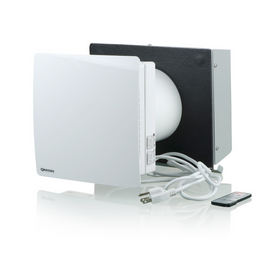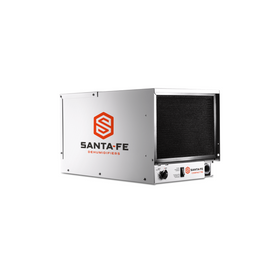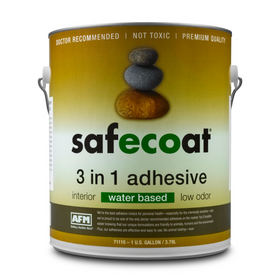Empowerhouse’s other mechanical components include an energy recovery ventilation (ERV), a heat pump water heater, and a microinverter. All of these systems work synergistically to provide the homes with a steady supply of fresh, healthy air without compromising the structure’s energy performance.
Specifically, fresh air comes into the home from the ERV and into the air handler. The heat-pump water heater recuperates heat emitted as exhaust from the clothes dryer. In addition, cool dehumidified air that leaves that water heater is redistributed through the home, reducing cooling loads during the summer.
While home automation can lead to increased energy efficiency and savings, Empowerhouse’s design team found that providing real-time energy feedback allows occupants to understand their energy use and change their habits where necessary. To this end, a monitoring system controlled via smartphone, tablet, or home computer offers detailed analytics of each unit’s energy consumption.
Both units have LED lighting. Wireless switches communicate information using available energy harvested at their location through mechanical operation, photosensitivity, or ambient heat. The units also include an array of occupancy and daylight sensors that reduce energy use.
Passive Home, Productive Home
In order to maximize the home’s energy efficiency and thermal performance, Empowerhouse was built to passive home standards, making it the first DC-area home to be constructed adhering to these rigorous guidelines. According to the design team, the passive-house building strategy, coupled with the full-solar PV array, allows the homeowners to enjoy up to $2,300 yearly energy savings.
The 4.2 kW solar panel system is slightly smaller than PV arrays for other conventional homes. However, the comprehensively sealed building envelope and the units’ high-efficiency insulation allow for reduced energy demand. The thick envelope that wraps the home is an easily constructible but unique system with engineered wood I-joists sandwiched between sheathing, creating a 12” cavity that is filled with blown-in cellulose, giving the home an impressive R-Value of more than R-40.
Inside the home, the design team selected materials according to a series of criteria including affordability, green certification, embodied energy, non-toxicity, livability, constructability, and overall environmental impact. Meeting these criteria ensures Empowerhouse is an affordable, buildable home, with healthy indoor air quality. Low-embodied energy materials that are non-toxic and locally sourced were used whenever available and economically feasible.
The home was also designed to take advantage of passive solar heating strategies. Large windows on the south side let in the winter sun to illuminate and warm the home. Purposeful landscaping around the exterior of Empowerhouse brings sunlight and heat inside during the winter and shades the units during the summer.

















